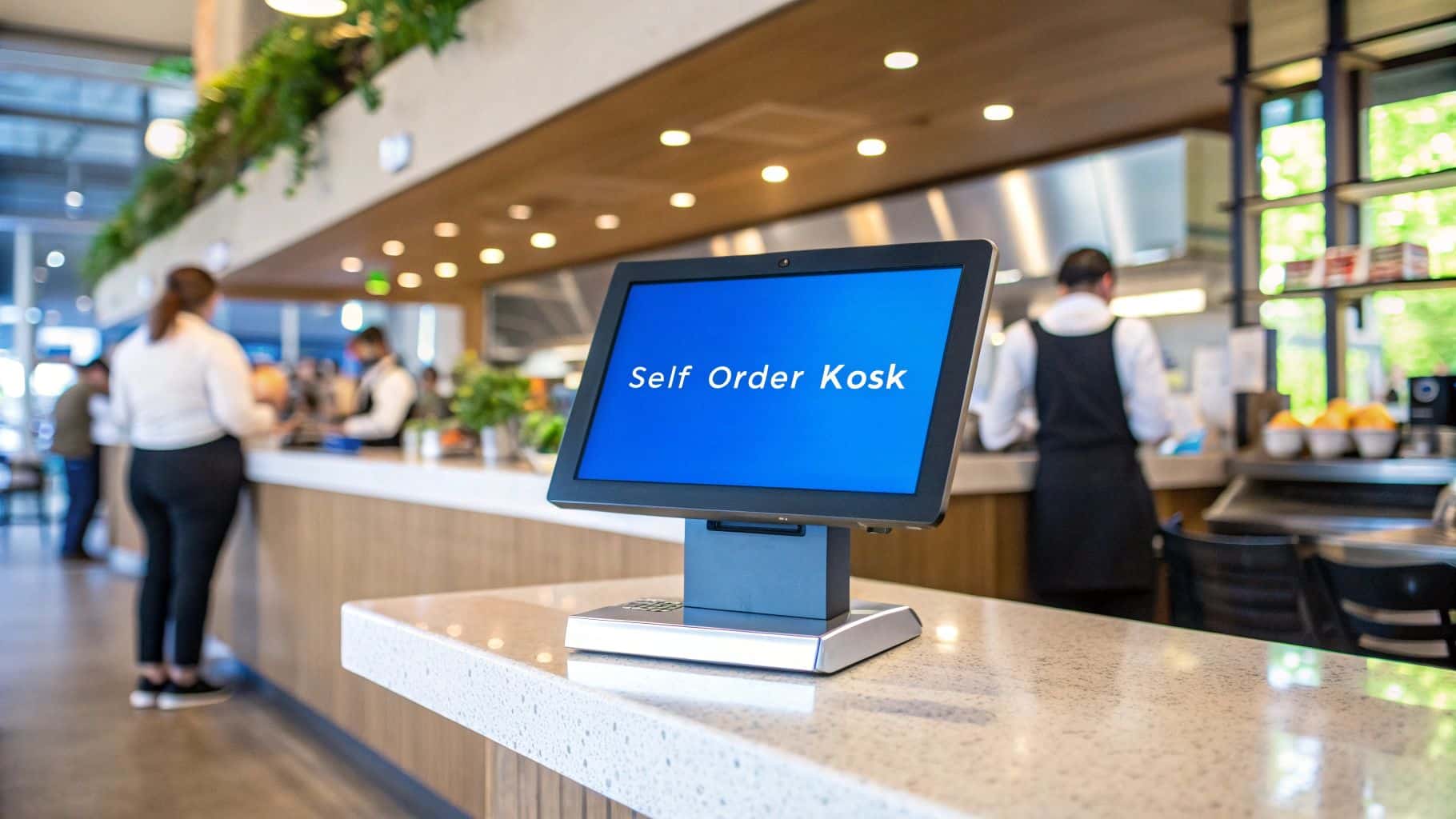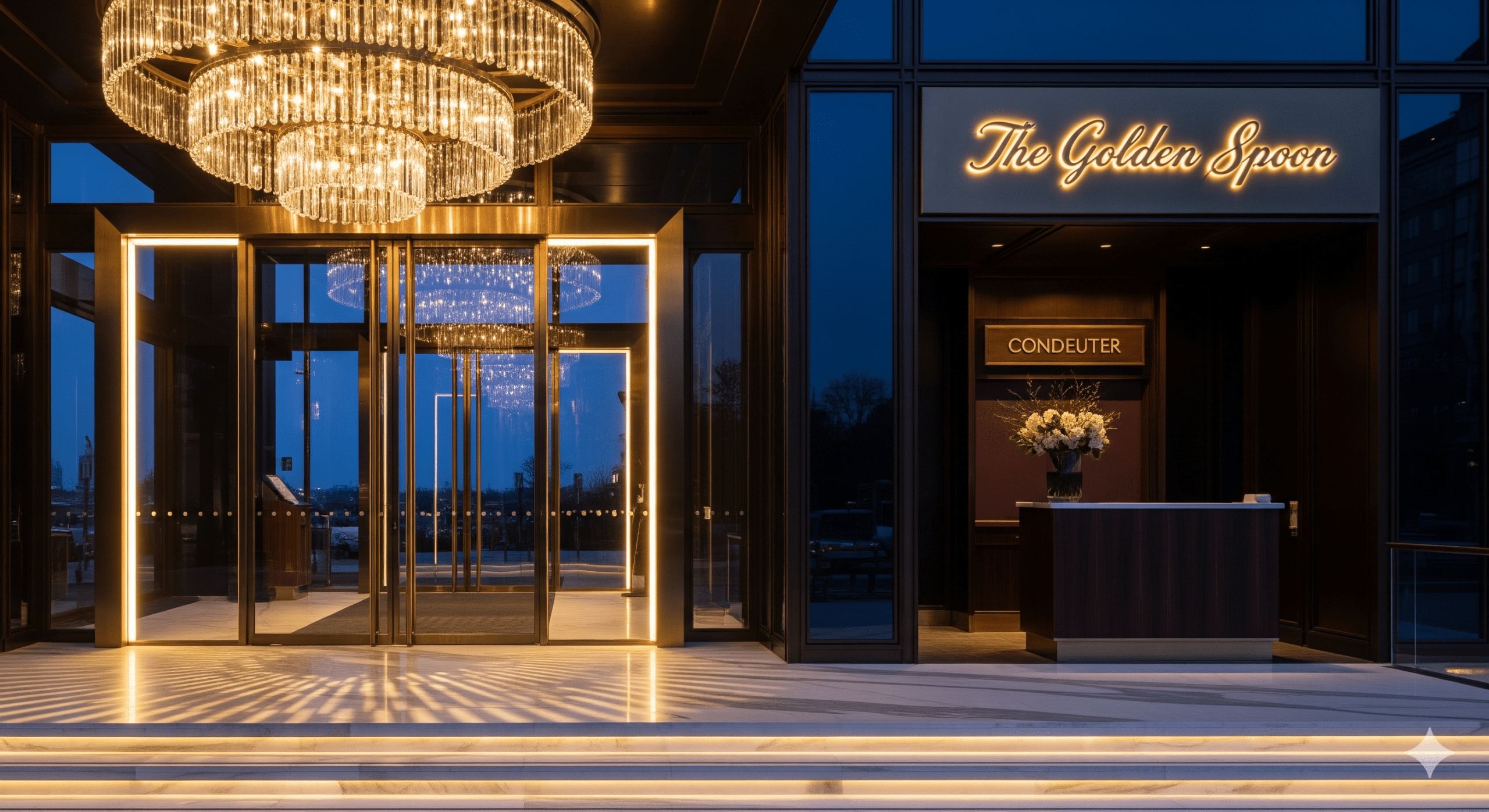Designing a butcher shop is more than just arranging meat display cases and refrigeration units. It’s about combining functionality, hygiene, aesthetics, and customer flow into a seamless shopping experience. Whether you’re opening your first butcher shop or renovating an existing one, the right design choices will not only improve efficiency but also boost sales, enhance safety compliance, and strengthen your brand identity. In this detailed guide, we’ll explore every aspect of butcher shop design, from workspace efficiency to branding elements, ensuring you create a space that is practical, safe, and welcoming.
Table of Contents
- Optimizing Shop Layout for Efficiency
- Meat Display Cases and Refrigeration Units
- Hygiene Standards and Safety Compliance
- Enhancing Customer Experience and Flow
- Branding, Aesthetics, and Signage Placement
- FAQ: Designing a Butcher Shop
Optimizing Shop Layout for Efficiency
A well-planned shop layout is the backbone of designing a butcher shop. Every inch of space should be used with purpose, ensuring smooth workflow between cutting stations, cold storage, and the point of sale setup. Good design reduces wasted motion, speeds up service, and creates a safer working environment for staff. An efficient layout also improves customer satisfaction by reducing wait times and making the shop easy to navigate.
Strategic Equipment Placement
Equipment placement is the foundation of workflow in a butcher shop, and it can either enhance or hinder operations. When designing a butcher shop, you must ensure that cutting stations are positioned close to refrigeration units and cold storage areas. This arrangement minimizes the time that raw meat spends outside chilled environments, which is crucial for maintaining freshness and reducing bacterial growth. Beyond food safety, this proximity saves staff countless steps over the course of a day, translating into faster service and less fatigue. For example, a shop that places its cold storage far from the preparation area will likely struggle with inefficiencies, whereas a linear setup streamlines both movement and output.
Ergonomic design is equally important in equipment placement. Work surfaces, knives, grinders, and packaging tools should be positioned at heights that reduce strain on employees, as repetitive bending and reaching can lead to long-term injuries. Adjustable counters and anti-fatigue mats are practical investments that demonstrate care for staff well-being. A butcher who works at a properly designed station can process more meat with fewer errors, showing how thoughtful design directly impacts productivity. In real-world examples, shops that invest in ergonomic setups report higher employee satisfaction and lower turnover rates, proving the value of smart design choices.
Another crucial factor is accessibility. Frequently used tools and cleaning stations must always be within arm’s reach, while bulkier or rarely used items can be stored further away. For instance, a handwashing sink placed within a few steps of the cutting station ensures staff can maintain hygiene without interrupting workflow. By contrast, poorly placed sinks or packaging supplies force employees to take extra steps, slowing service and disrupting efficiency. Strategic placement not only improves speed but also reinforces hygiene and safety compliance, both of which are critical for customer trust.
Storage Solutions for Butcher Shops
Storage is a cornerstone of shop design, as it ensures both product safety and workflow efficiency. Cold storage areas such as walk-in freezers and blast chillers need to be located strategically so butchers can restock without excessive back-and-forth. Proper zoning between raw and processed products reduces the risk of cross-contamination, which is one of the most common food safety issues in meat handling. In practice, this means raw poultry, beef, and pork should each have separate storage compartments, all clearly labeled to prevent mistakes during busy periods.
Dry storage is just as important as cold storage. Items such as spices, packaging materials, gloves, cleaning products, and tools must be organized in clearly designated spaces. Lockable storage cabinets for sharp knives and saws add another layer of workplace safety. For example, many successful butcher shops use shelving systems with adjustable racks to maximize vertical space while keeping items easy to reach. These solutions create a balance between accessibility and organization, preventing the clutter that often slows down operations.
Modern technology also enhances storage solutions. POS systems that integrate with inventory tracking allow butchers to monitor stock levels in real time. This ensures that items are replenished before they run out, while also preventing unnecessary overstocking that ties up cash flow. In a competitive retail environment, efficient storage not only supports hygiene but also helps cut down on waste, making the business more profitable over time.
Lighting and Workspace Efficiency
Lighting is one of the most underestimated factors in butcher shop design. Bright, evenly distributed lighting is essential for safe and precise cutting, while warm, focused lights on display counters make meats appear more appealing to customers. For example, fluorescent lighting may provide adequate brightness but can cast an unflattering hue on red meats, making them look dull. On the other hand, LED lights with adjustable tones create a more natural, appetizing appearance while also being energy efficient.
Workspace efficiency depends on careful organization and ergonomics. Cutting boards, knives, scales, and packaging supplies should be arranged logically so staff do not waste time searching for tools. In high-volume butcher shops, seconds saved in workflow add up significantly over the course of a day. A well-planned station might include designated drawers for knives, overhead shelving for spices and seasonings, and a nearby bin for immediate waste disposal. This kind of structured setup keeps the work area clear, safe, and efficient.
Lighting and workspace design also tie into energy savings and staff comfort. Poorly lit spaces not only increase accident risks but also cause eye strain and fatigue, reducing productivity. Conversely, shops that invest in layered lighting solutions—task lighting for preparation zones and softer ambient lighting for customer areas—create an environment that is both practical and inviting. The right balance between visibility, safety, and retail aesthetics ultimately contributes to better workflow and customer satisfaction.
Meat Display Cases and Refrigeration Units
Display cases are the centerpiece of any butcher shop. They showcase products while ensuring proper refrigeration, directly influencing customer purchasing decisions. Refrigeration units must be chosen with care, balancing efficiency, durability, and visual appeal. When designing a butcher shop, the display area is where form meets function.
Choosing the Right Display Cases
Display cases are more than just cooling units—they are powerful sales tools. Glass-front refrigerated cases keep meat fresh while allowing customers to easily browse selections. The choice between curved or straight glass fronts may seem cosmetic, but it impacts how customers perceive freshness and quality. Curved glass cases often appear more inviting, while straight glass options provide a cleaner, modern look that many urban butcher shops prefer. The design of the case should complement the overall shop layout and align with the brand’s image, whether that image is rustic, premium, or minimalist.
The size of display cases should be determined by sales volume and available space. Large butcher shops often invest in multiple cases to separate product categories such as fresh cuts, sausages, marinated items, and ready-to-cook meals. In contrast, smaller shops must make every square foot count, so compact, multi-tiered display cases may be the better option. Failing to size display cases correctly can result in overcrowding, which makes products less visually appealing, or underutilization, which wastes electricity and valuable space.
Integrating display cases with branding can also set a butcher shop apart. Custom signage, interior LED lighting, and stainless steel finishes create a consistent visual identity that reinforces trust. For example, a premium butcher shop might use illuminated signage inside the case to highlight organic or grass-fed selections. This small investment in branding enhances customer perception and encourages higher sales per visit.
Energy-Efficient Refrigeration Units
Refrigeration is one of the largest ongoing expenses in a butcher shop, making efficiency a top priority. Modern units use eco-friendly refrigerants and advanced compressors that consume significantly less energy compared to older models. Investing in these systems may cost more upfront, but the long-term savings on utility bills often justify the expense within a few years. For shops committed to sustainability, energy-efficient refrigeration also provides a marketing advantage, as customers increasingly value eco-conscious businesses.
The size and type of refrigeration must match the shop’s needs. Oversized refrigerators waste energy and increase operational costs, while undersized units risk product spoilage due to overloading. An accurate analysis of daily sales volume can guide this decision. For instance, a shop specializing in fresh daily cuts may require smaller but more frequently restocked units, whereas a high-volume retailer may need larger, industrial-grade refrigerators with backup systems in place.
Technology now allows for remote monitoring of refrigeration units. Cloud-connected temperature sensors can send alerts when temperatures fluctuate outside safe ranges, preventing spoilage and financial losses. For example, if a unit fails overnight, a manager can be notified immediately and take corrective action before thousands of dollars in product are lost. In designing a butcher shop, building in this kind of smart monitoring system is a safeguard that protects both reputation and revenue.
Cold Storage Integration
Cold storage design is about more than keeping products frozen—it affects workflow and safety throughout the shop. Ideally, cold storage should be located close to preparation areas so staff can replenish display cases quickly without crossing customer pathways. This separation between front and back-of-house operations keeps workflow efficient and prevents bottlenecks during peak hours. A poor layout, where staff must carry heavy trays of meat through crowded aisles, not only slows service but also increases safety risks.
Specialized equipment like blast chillers can further enhance efficiency. By rapidly reducing the temperature of freshly cut meats, blast chillers minimize bacterial growth and extend product shelf life. This technology is particularly useful in high-volume butcher shops or those that prepare specialty items such as charcuterie. For example, a butcher that produces house-made sausages can chill them quickly after cooking, ensuring they remain safe and high quality for customers.
Energy savings are also possible with thoughtful cold storage integration. Insulated panels, automatic door closers, and air curtains help maintain stable temperatures, reducing strain on refrigeration units. The long-term result is lower energy bills and greater product safety. A well-designed cold storage setup isn’t just a utility space—it’s a critical part of the shop’s operational backbone, contributing directly to both profitability and compliance with food safety standards.
Hygiene Standards and Safety Compliance
Hygiene is at the heart of butcher shop design. Customers expect clean, sanitary surfaces, and regulators require strict compliance with food safety laws. Designing a butcher shop with hygiene in mind means planning every detail, from flooring materials to ventilation systems. Without these standards, even the best layout fails.
Sanitary Surfaces and Materials
The choice of materials used in a butcher shop has a direct impact on hygiene and safety. Stainless steel remains the gold standard for countertops and preparation surfaces because it is non-porous, durable, and easy to sanitize. Unlike wood or other porous materials, stainless steel does not absorb moisture or harbor bacteria, making it compliant with health regulations. Shops that attempt to cut costs by using unsuitable surfaces often find themselves facing contamination risks and failed inspections, which can be financially devastating.
Flooring is another area where careful consideration is essential. Non-slip, water-resistant tiles or epoxy-coated floors not only reduce the chance of accidents but also allow for thorough cleaning with high-pressure washing. Strategically placed floor drains ensure that water flows away quickly, preventing puddles that could harbor bacteria or cause slips. A shop that installs inadequate flooring may face both safety hazards for staff and a reputation for poor cleanliness among customers.
Color-coded tools and surfaces further enhance sanitary practices. By assigning specific cutting boards, knives, and trays for beef, poultry, and pork, you reduce the risk of cross-contamination. For example, a red cutting board might always be used for beef, while a yellow board is reserved for poultry. This system is simple yet effective, allowing staff to follow best practices without confusion, even during busy shifts.
Ventilation and Airflow Systems
Ventilation is often overlooked in butcher shop design, yet it directly influences food safety, comfort, and overall air quality. A proper ventilation system controls humidity, removes odors, and reduces the risk of airborne contaminants. Excess humidity can cause condensation on walls and equipment, creating an environment for mold growth and corrosion. Therefore, dehumidifiers and well-placed exhaust fans are vital to maintaining a clean, durable environment.
Balanced airflow ensures that cool air circulates evenly across preparation areas and refrigeration units. Without it, certain spots may become warmer, putting products at risk. For example, in some older shops, uneven airflow leads to condensation forming on display case glass, which not only looks unappealing but also signals poor maintenance to customers. Installing air curtains at entrances can also prevent warm air from entering cold areas, which is especially helpful in hot climates.
Ventilation also improves the working environment for staff. High temperatures and poor air quality lead to fatigue and reduced productivity, while clean, cool airflow keeps employees comfortable. By investing in energy-efficient ventilation systems, shops can achieve both safety compliance and cost savings. This combination of practicality and efficiency reflects the kind of modern butcher shop design that customers expect.
Safety Compliance Practices
Food safety compliance extends far beyond keeping surfaces clean. It involves strict procedures for handling, storing, and labeling products, as well as detailed documentation for inspections. For example, many jurisdictions require butcher shops to maintain daily logs of refrigeration temperatures. Without accurate records, shops may face fines even if products were stored correctly. Designing a butcher shop with compliance in mind means creating systems that make record-keeping simple and consistent.
Employee training is an equally critical factor in compliance. Even the cleanest, best-designed shop fails if staff do not understand or follow hygiene practices. Training programs should cover handwashing techniques, proper use of protective gear, and procedures for cleaning equipment between tasks. Visual reminders such as posted checklists and signage near sinks reinforce this training and help prevent lapses during busy hours. A culture of accountability ensures that hygiene remains a top priority every day.
Technology also plays a role in simplifying compliance. Advanced POS and inventory systems can track product batch numbers, expiration dates, and supplier details. In the event of a recall, this traceability allows butchers to identify and remove affected products immediately. Automated reporting tools can also generate compliance reports for inspectors with minimal effort. Shops that adopt these technologies not only reduce their risk but also demonstrate professionalism and reliability to both regulators and customers.
Enhancing Customer Experience and Flow
Customer experience is the deciding factor for repeat business. Designing a butcher shop with customer flow in mind creates a welcoming and efficient retail environment. From entrance design to point of sale setup, every step should encourage engagement and satisfaction.
Entrance Design and Flow
The entrance of a butcher shop is the first point of interaction between the customer and the brand, making it a vital component of overall design. Wide, accessible doorways signal inclusivity, ensuring that customers with carts, strollers, or mobility aids can enter easily. Positioning attractive displays near the entrance, such as seasonal cuts or promotional bundles, immediately captures attention and sets the tone for the shopping experience. For example, a butcher shop highlighting barbecue cuts near the entrance during summer months not only showcases products but also taps into customer demand.
Customer pathways should be intuitive, guiding visitors toward display cases without creating bottlenecks. Open layouts with clear sightlines encourage exploration and reduce confusion, while strategically placed islands or small displays can encourage impulse buys without obstructing flow. Shops that ignore flow often find customers frustrated by crowding or unclear direction, which negatively impacts sales. A thoughtful design ensures smooth traffic even during peak times.
Lighting at the entrance plays a psychological role. Warm, inviting tones create a sense of comfort, while spotlights can emphasize premium or specialty products. Combined with subtle branding elements, such as logo signage or branded mats, the entrance becomes both functional and memorable. This first impression strongly influences whether a customer feels inclined to return.
Signage and Product Communication
Effective signage transforms customer interactions by making product information clear, accessible, and visually engaging. Signs should not only indicate prices but also highlight key selling points such as “grass-fed,” “locally sourced,” or “organic.” These labels help customers make quick, informed decisions and build trust in the butcher’s expertise. For example, a customer browsing sausages may be swayed by signage that mentions house-made recipes or allergen-free ingredients, reducing hesitation and speeding up purchases.
Digital signage is increasingly popular in modern butcher shops. Mounted screens can display cooking tips, recipe pairings, or daily promotions, adding value beyond basic price information. This technology enhances the shopping experience by educating customers while they wait, ultimately leading to more confident purchases. Traditional chalkboards or handwritten signs also add a rustic touch that may appeal to artisanal shops looking to project authenticity.
Consistency in signage design is vital for reinforcing branding. Using the same fonts, colors, and graphic elements across labels, posters, and digital screens creates a cohesive visual identity. Customers may not consciously notice this consistency, but it contributes to a sense of professionalism and reliability. Well-executed signage turns routine product communication into a subtle but powerful branding tool.
Point of Sale Setup
The checkout area is the final touchpoint in the customer journey, and its design can leave a lasting impression. Counters should be spacious enough to accommodate bags, packaging, and card machines, while also allowing staff to work quickly and efficiently. Crowded or poorly designed checkout zones create stress for both employees and customers, leading to slower service and reduced satisfaction. In contrast, a streamlined counter setup communicates professionalism and care.
Technology greatly enhances point of sale operations. Modern POS systems like Biyo POS integrate payment processing, real-time inventory management, and customer loyalty programs in a single platform. For example, a customer purchasing a specialty cut can be offered recipe suggestions or loyalty points automatically through the system. This seamless experience not only reduces wait times but also encourages repeat business, demonstrating how technology directly supports growth.
Self-checkout kiosks are another innovation
Self-checkout kiosks are another innovation for larger butcher shops. These allow customers to skip lines during busy periods, providing convenience and reducing congestion. However, they should always be balanced with staffed counters, as personal interaction remains a core value of traditional butcher businesses. By blending technology with human service, butcher shops can satisfy a wide range of customer preferences while maintaining efficiency.
Branding, Aesthetics, and Signage Placement
Branding and aesthetics influence customer perception and loyalty. A butcher shop should reflect its values through interior design, color schemes, and overall atmosphere. Cohesive branding elements create a memorable experience that goes beyond the purchase of meat.
Butcher Shop Aesthetics
Aesthetics define the atmosphere of a butcher shop and communicate its values to customers. Shops emphasizing tradition might use warm wood accents, vintage décor, and muted color palettes to create a rustic, artisanal feel. In contrast, modern butcher shops often rely on stainless steel, polished surfaces, and bold colors to signal efficiency and innovation. For example, a premium urban butcher might incorporate black-and-gold branding with sleek glass counters to project sophistication and exclusivity.
Lighting, décor, and textures all contribute to this overall aesthetic. Heritage photographs, wall art featuring local farms, or branded murals can tell the story of the shop, fostering a deeper connection with customers. These touches make the store not just a place to buy meat but an experience in itself. Retail aesthetics also encourage customers to linger longer, which often leads to higher spending.
Even uniforms and packaging carry aesthetic weight. Branded aprons, eco-friendly bags, and custom wrapping paper with logos extend the brand experience beyond the store. Customers who carry branded packaging out of the shop essentially become walking advertisements, reinforcing awareness and recognition within the local community.
Butcher Counter and Workspace Design
The butcher counter is both a functional workstation and a customer-facing interaction point. Counters must be designed for visibility, ensuring customers can see the full range of products while butchers have easy access to their tools. A counter that is too high or cluttered can create barriers between staff and customers, reducing engagement. Conversely, a clean, well-lit counter communicates professionalism and transparency, which builds trust in product quality.
Ergonomics also apply at the counter. Staff should not need to stretch or bend excessively to serve customers or package products. A well-organized counter might include integrated scales, built-in storage for packaging materials, and hooks or racks for commonly used tools. By reducing wasted movements, butchers can serve more customers efficiently, improving both sales and customer satisfaction. For example, a busy shop during holiday seasons benefits significantly from an ergonomic counter that allows for continuous, rapid service.
Branding at the counter further enhances the customer experience. Custom-engraved surfaces, subtle lighting accents, and staff uniforms all reinforce the brand identity at the point of interaction. Every exchange with a customer becomes not just a transaction but also an opportunity to strengthen the brand’s message of quality, reliability, and expertise.
Exterior Signage and Branding Elements
Exterior signage serves as the first impression for potential customers walking or driving past the shop. Large, bold lettering ensures visibility from a distance, while good lighting keeps the sign effective after dark. The design should reflect the brand’s core identity, whether that’s traditional craftsmanship, premium luxury, or modern convenience. For example, a butcher specializing in organic, locally sourced meats might use green accents and natural textures in their exterior design to reinforce their values.
Additional branding elements like window decals, outdoor displays, or awnings add depth to the storefront’s personality. These features can communicate promotions, showcase premium products, or simply provide a warm invitation to enter. Shops that invest in strong exterior branding often see increased foot traffic because the storefront acts as a constant marketing tool. Neglecting exterior design, by contrast, risks blending into the background and losing potential walk-in customers.
Digital signage offers flexibility for shops looking to stay dynamic. Screens can highlight daily specials, announce seasonal promotions, or share brand stories. This approach keeps the storefront visually fresh and interactive, appealing to both loyal customers and new visitors. Exterior branding is more than decoration—it is a strategic investment in visibility and customer engagement that pays dividends in long-term recognition and loyalty.
About Biyo POS: At Biyo POS, we understand that efficient design goes hand in hand with smart technology. Our system offers all-in-one point of sale solutions, inventory management, and customer engagement tools. With Biyo POS, you can streamline operations, reduce waste, and improve the overall shopping experience for your customers. Explore more and sign up today to take your butcher shop to the next level.
FAQ: Designing a Butcher Shop
What is the most important factor when designing a butcher shop?
The most important factor is balancing efficiency with hygiene. Proper workflow design ensures smooth operations, while sanitary surfaces and storage solutions maintain compliance and safety. Together, these create a functional and customer-friendly environment.
How can I improve the customer experience in a butcher shop?
Improving customer experience involves thoughtful layout planning, engaging signage, and efficient checkout systems. Creating a welcoming entrance, showcasing products with attractive display cases, and offering fast, seamless POS systems all contribute to a positive experience.
What equipment is essential in butcher shop design?
Essential equipment includes meat display cases, refrigeration units, cold storage, cutting stations, and point of sale setups. Hygiene-focused additions like sanitary surfaces, ventilation systems, and ergonomic workstations are also vital to successful shop design.






